Garage heating features

The garage space is adapted to suit specific needs. Heating the garage must also meet these needs. But in any case, it is important to decide on the method that will be the most economical and safest. The right approach will provide the room with an ideal heating system.
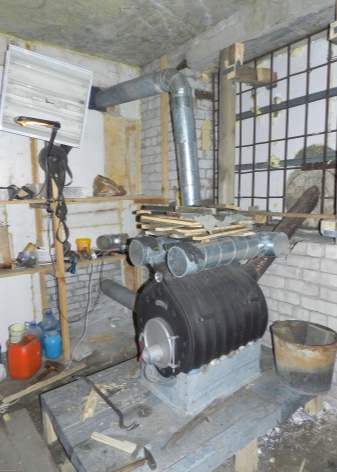
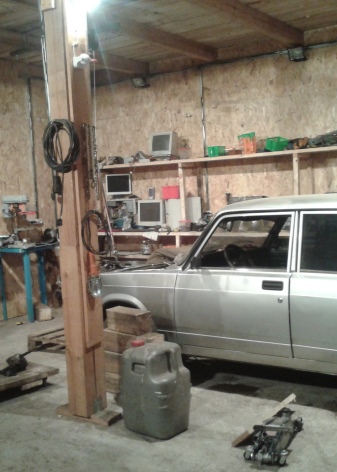
Peculiarities
It is necessary to select a heating system that will ensure blocking of operation in the event of malfunctions and failures. Therefore, when creating cheap heating, it is worth considering whether this will lead to serious problems. The most convenient thing is to choose an economical option that can provide the required temperature conditions with minimal energy consumption.
Garage heating must meet the following functions:
- reliability;
- resistance to temperature extremes;
- autonomy, which will allow heating to continue in the absence of energy.
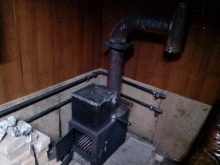

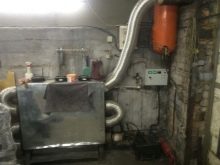
The creation of an economical garage heating system will become possible with a competent approach to the insulation of walls, roofs, garage doors, as well as with a well-thought-out ventilation system. Sometimes a competent arrangement of garage insulation is enough to service a car and start its engine without any problems. If heating is still required in the garage, you must first decide on a project option.


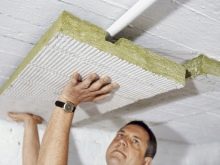
Before creating it, it is worth considering what types of fuels are possible for use in a particular system.
The following can be considered as fuel for the garage heating system:
- solid species (firewood, sawdust, coal);
- liquid types (fuel oil, diesel, water);
- gas;
- electricity.



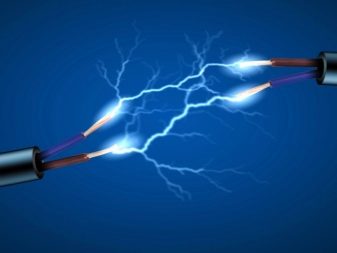
All types of fuel have some peculiarities, imply the use of this or that equipment. Depending on the type chosen, it will be possible to create one or another heating system.
For example, you can install garage heating cheaply and quickly if you choose equipment that runs on wood or other solid fuels. This type of equipment is not recommended to be installed near combustible materials, which are abundant in the garage. Therefore, wood or coal stoves for a garage cannot be called a fire safe heating option.
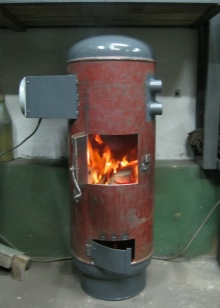
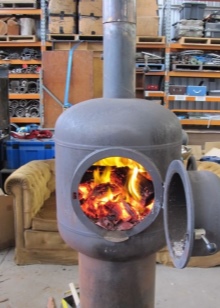

Gas boilers can be installed in the garage if a gas pipeline is connected to the structure. In the absence of a central gas pipeline, equipment operating on liquefied gas can be considered. The boilers are different in configuration, and are also equipped with an automatic safety system. The only significant feature is the impossibility of storing a gas cylinder inside the garage.
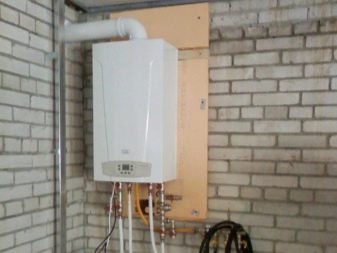

Another option that has its own characteristics is heating with electricity.
The main advantages of the equipment:
- reliability;
- small dimensions;
- no need for a chimney.
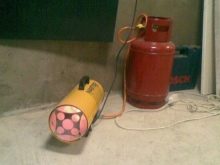
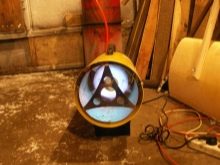
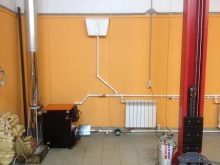
The mass of options for each type of equipment makes you think about the choice. Let's consider them in more detail.

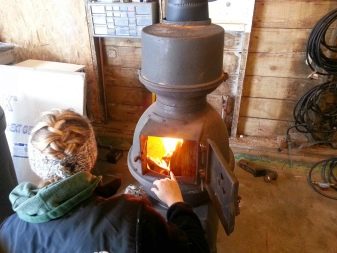
Views
An economical way of heating the garage - heating with solid fuel The manufacture of such a stove is available at home. Buying off-the-shelf equipment is not expensive. It will be necessary to think over the installation of the chimney. It is also important to consider how you store your stock of firewood, coal, or other solid fuels. It takes time to prepare solid fuels, and the chimney will have to be periodically cleaned of soot.
The potbelly stove can work not only on solid fuel, but also on diesel fuel. Diesel fuel is expensive today, so spent fuel is often used for such stoves, but it is not fireproof. To ensure safety, it is worth considering boilers for the garage of domestic manufacturers. They have a longer burning time, which increases the battery life. A long-burning boiler is characterized by efficiency and durability. The only drawback of the system is the need for constant monitoring.
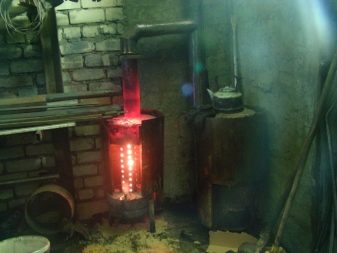
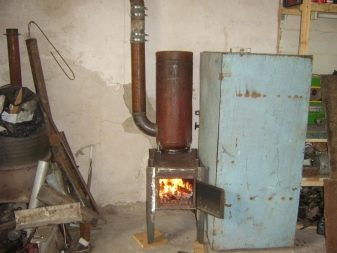
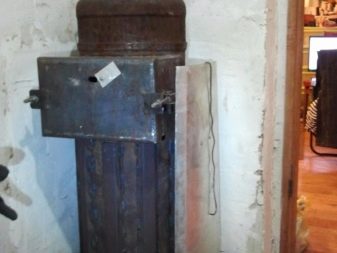
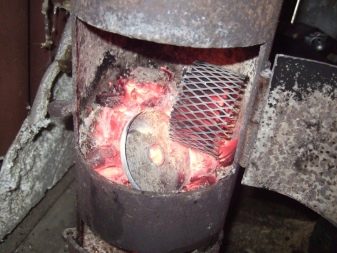
An alternative equipment can be a home-made potbelly stove. They successfully use used machine oil. The working off is settled and filtered. Such equipment adds not only heat, but also a specific smell. Many people think that this is an insignificant moment for a garage.
Diesel-fueled equipment options are commercially available. Diesel - air heaters consume a glass of fuel per hour. At the same time, heat transfer develops up to 2 kW. There are more powerful equipment options.


Heat guns are used not only for the garage, but also for industrial premises. Some models can run on both solid fuel and electricity. The cost of the models on the market varies depending on the type of fuel used. You can buy a kit that runs on different fuels.

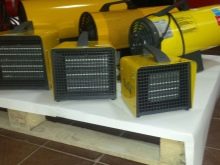
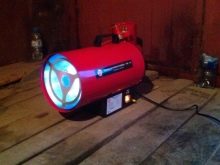
If the garage has electricity, an electric boiler can be connected to it. This equipment is quite enough for heating the garage, since this type of room is usually small in area. Electric heating is reliable and compact. It does not require the construction of a chimney.
Electric heating options can be as follows:
- radiator;
- fan heater;
- boiler.

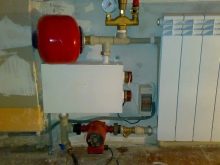
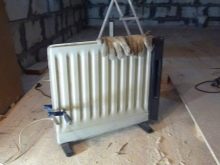
You can choose one or another method depending on how long a person is in the garage. For example, with a rare visit, a pair of fan heaters will suffice. With a long stay in the garage, you need to consider options for convectors or radiators. Devices of this type are made by craftsmen by hand. For example, for electric radiators, pipes of a suitable size, as well as heating elements, are enough. The equipment is on sale, but you will have to spend money on it.
An electric boiler is a complex system. It includes pipelines and the boiler itself. Electric boilers on sale are induction or electrode. The first option is expensive. However, according to the owners, the costs fully pay off over time.
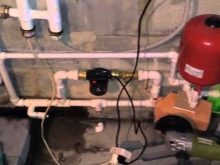
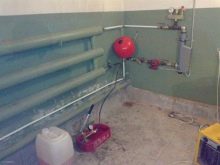
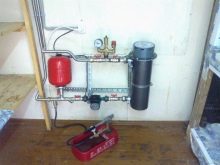
Electrode boilers are cheaper in cost, but equipment performance is lower. Antifreeze is required for electrode equipment. At the same time, not every “anti-freeze” is suitable for a particular device.

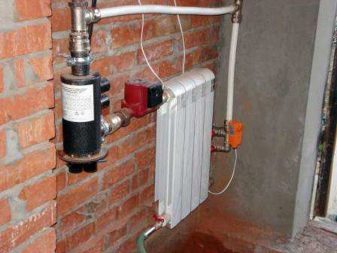
There are appliances on sale that are suitable for heating a small garage. For example, infrared heaters. The equipment is characterized by the fact that it heats objects, then the objects give off heat to the surrounding space. Infrared devices consume a lot of energy, so they are considered not very economical.
Oil radiators work on the principle of a conventional convector. The equipment is capable of heating a small room quickly enough, at a low cost.
Fan heaters with ceramic elements also serve as a heating source. The cost of the devices is high, but they have a lot of positive characteristics due to the increased heating area.
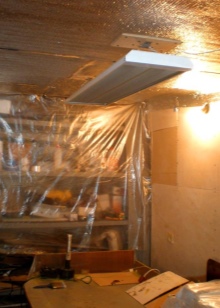
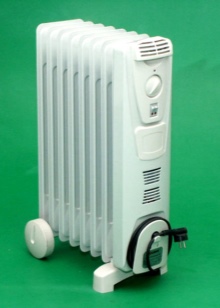
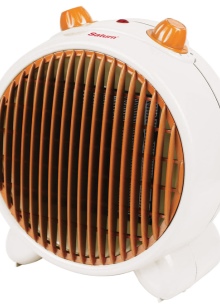
Heating the garage with autonomous electrical appliances is convenient, since the devices do not require professional installation. They can be plugged into a simple outlet, so you do not need to coordinate with the utility company. In addition to the garage, these devices can be used in other outbuildings, for example, in greenhouses. Among the shortcomings, it is worth noting the rapid cooling of the air after turning off the device and the impossibility of heating the garage in the absence of energy.
You can heat the garage with batteries with a circulation pump. Connection diagrams are possible with or without a boiler. The system is usually connected to electricity and heats it with a coolant, which is used as water circulating along a closed profile from pipes.
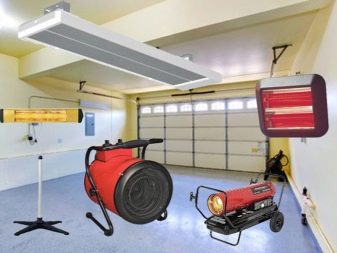
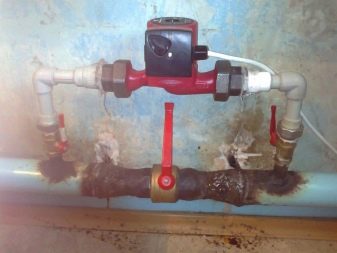
Pipes heated by hot water give off heat to the surrounding space. Water heating is installed in the garages that are adjacent to the house. This option is also considered the most suitable for garage complexes. Laying pipes is quite an expensive undertaking. Those with sufficient income use hot water underfloor heating in a private garage. It is convenient and fireproof. You can save money with the installation of water heating in the garage using an ordinary stove, a pump connected to heating batteries. For self-installation, this system is complex, it requires knowledge and skills.
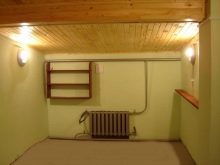

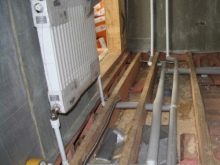
Air heating - economical and efficient in winter.
Equipment options:
- steam;
- convector.
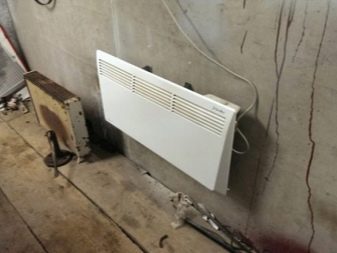
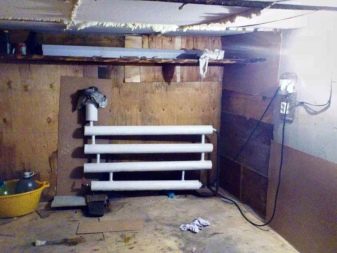
Any of the methods is profitable and economical. Correctly installed garage air heating generates comfortable temperatures in the most visited areas of the room. Thermal energy is delivered to workplaces through pipes and air ducts. Tees, regulators, etc. are used to distribute warm air. The popular scheme can be considered in more detail.

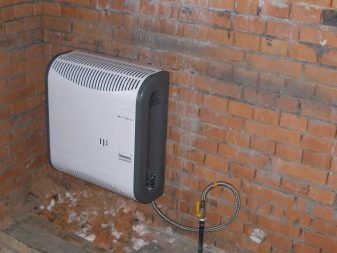
So, the system will function thanks to the heat generator. The device must be equipped with a temperature sensor. The equipment is installed in a garage, reliably protected from drafts. Thermal insulation materials will prevent hot air from escaping.
Installation of air ducts is carried out under the roof of the garage. The line is based on insulated galvanized steel. Individual pipes are interconnected according to a certain method and connected to the boiler. Functionally, this type of heating creates a directed flow of warm air. Equipment for such systems is considered fire safe. Air heating in the garage is easy to install yourself. It should be borne in mind that convectors are usually wall mounted and operate on the principle of an air conditioner. And steam stoves in the process of work suck cold air into themselves, and throw it out already heated. And to that, and to other equipment, you can connect a system of pilot pipes.
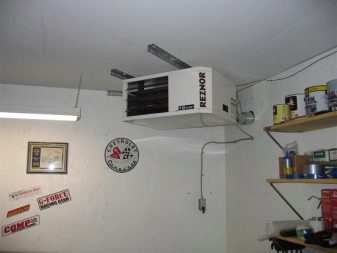
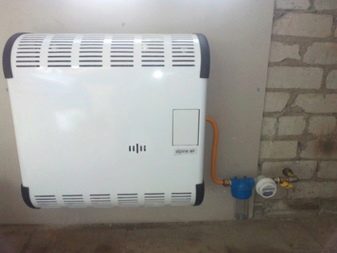
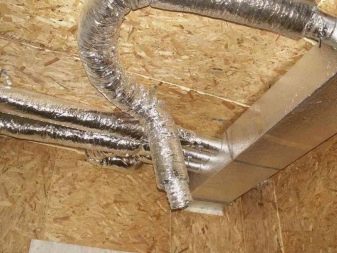

It is also worth considering in more detail the option of heating the garage with devices working on testing. Waste oil or antifreeze ovens can be highly efficient units. Devices can be factory-made or home-made. Both options are popular as they are characterized by a simple operating principle.
Such stoves are very often used in car services and garage boxes, since the devices simplify the disposal of waste resources. The ovens themselves, although not cheap, do not incur expenses for their further operation. So the fuel costs are paid off in just a few months of active operation.

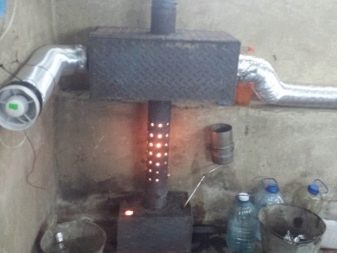
Commercial samples of such stoves include a pyrolysis combustion chamber. The package also includes a fuel tank, the capacity of which is sufficient for a day of continuous operation. The fuel in the production stove burns without the smell of burning oil. The kit also includes an afterburner and an upper ring for the construction of a chimney.
Variants of more expensive stoves differ in a drip combustion scheme. The fuel consumption in the system is lower, and you can use almost any oil, even home oil. The drip dispenser provides constant continuous burning of a certain power.
The stove is ignited by adding burning rags or rubber to a special bowl.
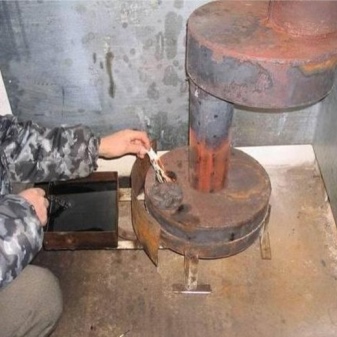
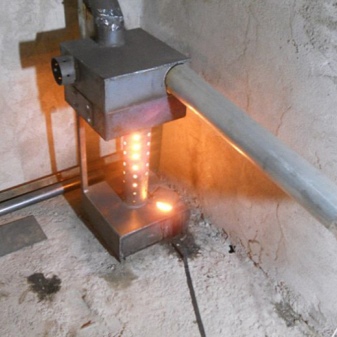
The craftsmen embody the first and second types of designs independently. The assembly sequence for a homemade stove is quite simple.
The first chamber is being assembled - it is a round device closed with a lid with drilled holes. A pipe is installed inside the device - the second chamber of the furnace.A metal bottom is welded to these parts, and a cover is also installed. The tank is connected to the pipe. A part of the inner pipe is welded to it. A chimney is welded to the top of the perforated pipe.
Such a stove can be installed on a flat area made of non-combustible materials (brick, concrete). Mineral or synthetic oil can be used as fuel. It is strictly forbidden to use gasoline, kerosene, and solvents.
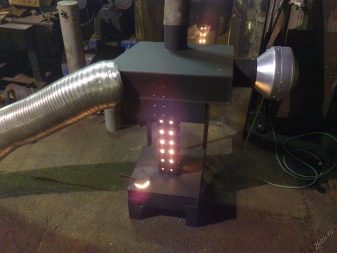
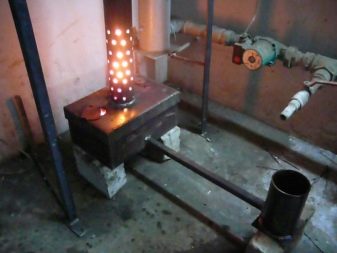
Drip-type stoves in home production are equipped with two tanks. In one, the combustion process takes place, and in the other, combustible gas accumulates. Combustion also takes place in the second chamber, so such stoves give a higher efficiency in comparison with the first option.

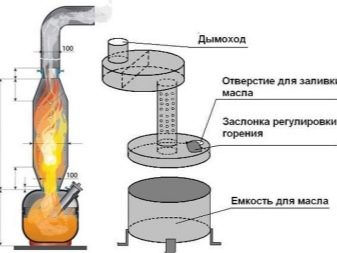
In addition, drip-type ovens are supplemented with elements of equipment that allows you to connect the oven to the container. It can be used to heat water or cook food.
The simplest installation option for such a design is from a gas cylinder.
It is divided into four zones:
- mixing zone;
- pyrolysis zone;
- combustion zone;
- afterburning zone.
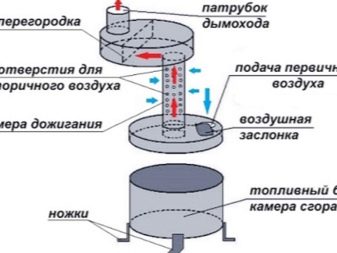
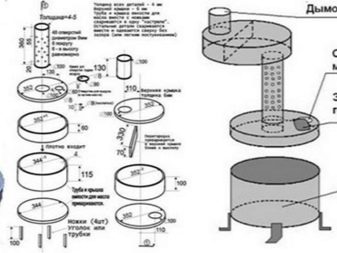
In this case, the upper and lower zones are cameras. Both are connected by a pipe that is installed inside. A chimney is mounted to the top of the cylinder. Everything, a simple stand-alone device is ready.
The heat in the garage will be if you choose gas-powered appliances. At the same time, for some devices, it is not necessary to have a central gas line passing nearby. Gas devices are simple and inexpensive. For example, the simplest is a burner.
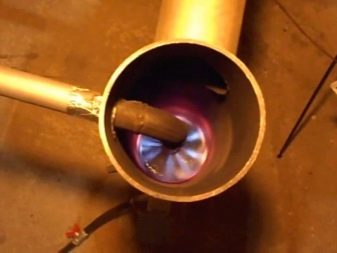

The device requires liquefied gas, which heats the heat exchanger. Heat is supplied from it, and the movement of warm air is provided by a fan. The burner can quickly heat up a small room in which repair work will be carried out.
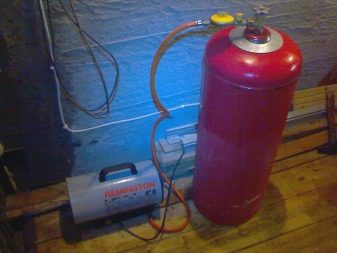
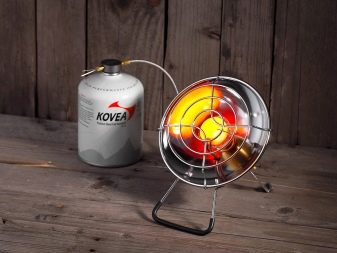
On a larger area, a gas heat gun will show itself more efficiently. Car locksmiths willingly use equipment in large repair boxes, despite the fact that this device is quite noisy.
On sale you can find portable gas powered devices. The devices are supplied complete with automation, moreover, with special gas cylinders, which exclude a violation of fire safety. The devices have proved to be effective not only in garage boxes, but also as home equipment.
Recently, catalytic heat exchangers have become widespread, in which a liquefied gas mixture is fed to a heating element. The panel heats up, giving off heat to the room.
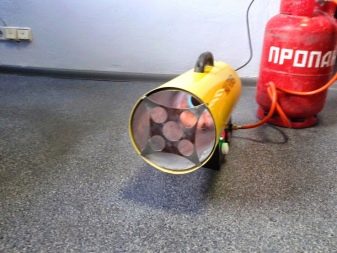
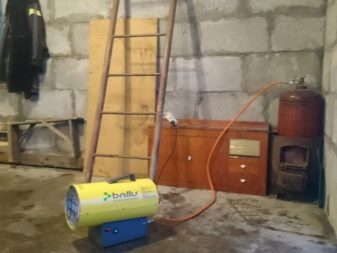
Another option for gas-fired appliances is gas convectors. The equipment is powerful enough to heat not only a small garage, but also a warehouse.
Heating devices of this type are of two types:
- Open execution. The devices have an inspection hole on the front side, allowing you to observe the flame.
- Closed execution. The equipment is usually wall-mounted and looks like an electrical device.
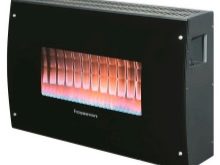

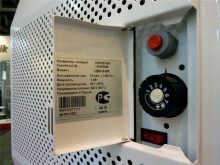
When choosing this or that type of device, it is important to understand that it must be fireproof.
The safety of any equipment is, first of all, the observance of the operating rules. Different types of devices comply with certain standards. If you combine them into a single whole, then electrical equipment will be the safest.
Gas heaters with a cylinder or register nevertheless carry a great danger during operation.
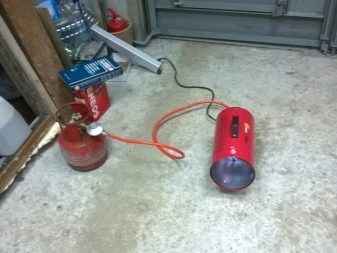
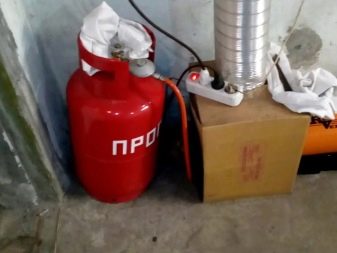
Electric heaters of any kind require:
- Matching the possibilities of the sockets and the connected electrical network to the garage. It must be able to withstand the power of the device.
- Compliance with moisture indicators. There should be no dampness in the garage. This phenomenon, for example, can occur with a sharp transition from negative to positive temperatures.
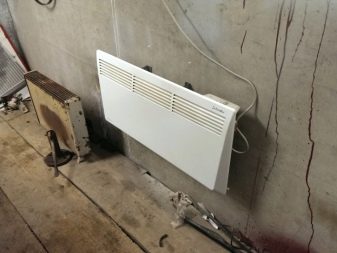
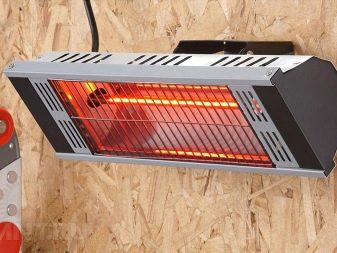
Gas diesel, petrol and other types of heaters must comply with the following standards:
- be absolutely sealed, otherwise any leakage of liquid fuel will lead to a fire;
- be equipped with a chimney, otherwise poisoning by combustion products may occur;
- be equipped with a ventilation system, otherwise the room will be deficient in oxygen.
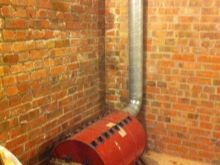
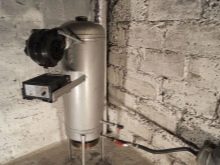

If safety is the basis for choosing a device, then it is better to prefer electrical options. If the basis of choice is price, then choose diesel units.
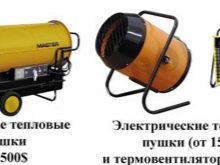
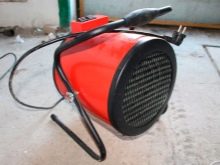

Tips & Tricks
Experts advise choosing a garage heater in accordance with the power. The higher this indicator, the more area the device can heat. To calculate the approximate required power, it is recommended to calculate the area of the room and multiply the resulting figure by eight.

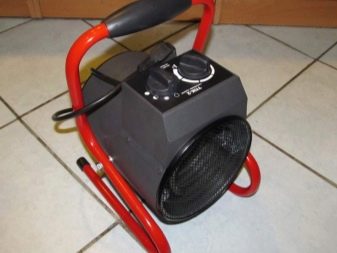
The result will be approximate, since for accurate calculations there is a special formula that includes indicators such as power (kcal / h) (N), volume (cubic meters) (V), temperature difference (outside and inside) (dT), warm air dispersion coefficient (K), for which the following values are accepted:
- 0.6-0.9 - in the presence of thermal insulation;
- 1-1.9 - when insulating garage doors and concrete walls;
- 2-2.9 - in the absence of insulation and concrete walls;
- 3-3.9 - for metal gates and walls.

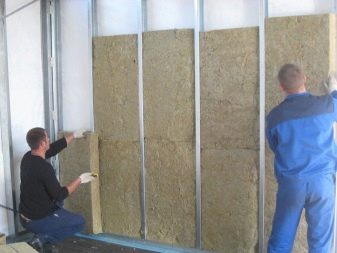
The formula looks like this: N = V * dT * K.
Calculation for a garage 7 * 4 * 3 meters, insulated on all sides and with a hood will look like this:
V = 84 cubic meters m
For example, at a temperature of minus 20 degrees in the garage, it should be about zero, which means that dT will be - 20. For an insulated garage, K will be equal to 1.5. We consider:
N = 84 * 20 * 1.5 = 2520 kcal / hour.
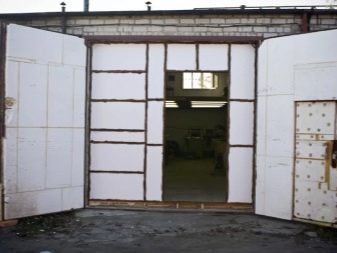
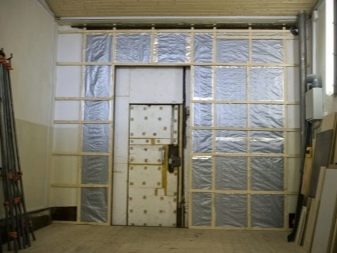
To convert the value to W, let's solve one more example, since 1 W = 0.86 kcal / hour or 1 kcal / hour = 1.163 W, so our value in W will be as follows - 2930, 76. A heater of this power will heat the room to the specified temperature for an hour. By the way, the price of the devices is closely related to the power.
Functionality and country of origin are secondary values. As a functional, for example, regulators can be present, as well as an elementary system of safe automation.

So, for example, the simplest 2900 W oil heaters will cost 3500-4000 rubles. Devices with higher power will cost about 5,000 rubles, but with accurately calculated indicators, you should not overpay.
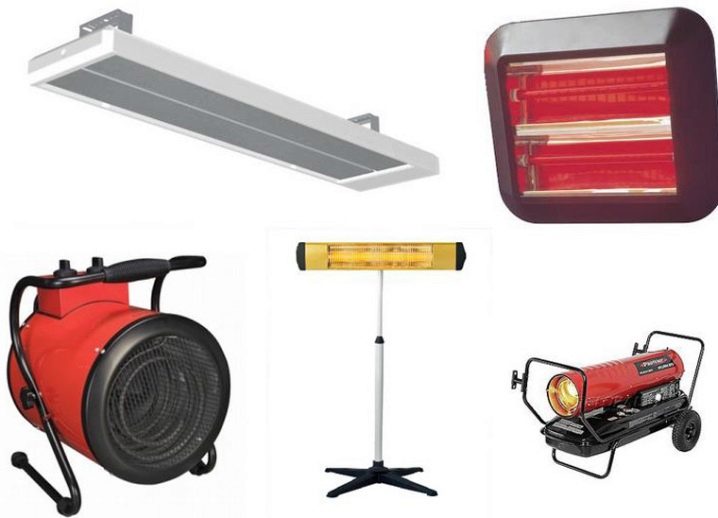
If finances allow, it is better to choose equipment models that operate on gas with a closed type of combustion chamber. Devices with a power of up to 4W can be purchased at a price of 12,000 rubles. Diesel equipment of the same power will cost more. Devices can be purchased at a price of 28,000 rubles.
You can quickly and cheaply assemble a device of the required power with your own hands. To make the equipment, pipes, radiators and other parts are required. This is also a waste, and also labor costs, as well as the mandatory presence of skills. Otherwise, it is better to make the necessary calculations and see the economic benefits of buying a factory heater. These devices will be much more reliable.
For information on how to make heating in the garage with your own hands, see the video below.





























































The comment was sent successfully.